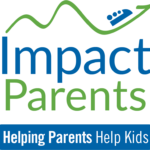Win the Battle for Brain Health with ADHD

Would you be willing to try something extraordinary, heroic, even herculean,to improve daily family life impacted by ADHD? Most likely, your answer is, “Yes! Anything!” What about three easy, uncomplicated steps that could bring the same dramatic improvements?
Brain Health – We Are What We Eat
Within the past 10 years, researchers have been learning the importance of the connection between gut health and brain health. The gut is an important component in the process of making essential “neurotransmitters” like dopamine and serotonin. The quality of food we take inside determines the quality and availability of these neurotransmitters for use in our body.
As parents, we want to give our children with ADHD every advantage, neurologically. That goes for cell creation and balance of hormones essential for thinking and doing. That's why it's important to encourage the consumption of high quality, clean, live food, the essential foundation of brain health.
Article continues below...
Treatment for your Child's ADHD
Download a free tip sheet "Recommended Treatment for ADHD: Medication & Behavior Management" for what's really recommended for your child or teen.
Digestion & Inflammation
There's more to know about what goes inside. Sometimes highly processed foods lead to a condition in the gut that can disrupt good digestion. Children can become sensitized to some of the non-nutritive preservative and highly “flavorizing” chemicals, (salty, sugary, starchy), that reduce the cell-building power of the food they consume.
Scientists explain, this type of Standard American Diet (SAD) often leads to systemic inflammation that can affect brain function. Food-related inflammation is often associated with:
-
Brain fog (pervasive type of inattention and lack of focus)
-
Moodiness
-
Depression
-
Anger
-
Sleep disturbance
-
Poor self-regulation
If you've been observing these conditions as part of life in a family with ADHD, it is very possible that experimenting with small changes in food choices might lead to increase in peace and calm.
Antibiotics
In addition to food, a big culprit in the inflammatory process is an over-exposure to antibiotics. With too many antibiotics, the beneficial “happy” balance between good bacteria and bad bacteria is tilted in the direction of the toxic cells. This sets up the gut for inflammation, which has been proven to worsen ADHD symptoms.
Think of how often, over time, you and your children have taken doses of antibiotics. Then consider how often you are consuming antibiotics remaining in the cells of the foods you eat. Reducing this exposure is another small change that can reduce inflammation.
Three Easy, Uncomplicated Steps
As you can see, what our children take inside their bodies, in the form of both food and medicine, has an effect, for good or for ill, on brain health and ADHD symptoms. But many children with ADHD make food choices that are rigid and limited. Often, we let it go, because it doesn't seem worth the battle.
But, maybe it's JUST the battle worth fighting?
Here are three easy steps to get you started:
- First, observe. Get a realistic idea about what goes inside your child - a baseline of processed food vs. clean, live food. For the next 48 hours, notice – does your child eat a variety of foods?
How much and how often does your child choose:
-
Sweet, sugary drinks (even those with artificial sweeteners)
-
Packaged, boxed, wrapped “food-like” products, like cookies, candy, snack packs
-
Salty, sweet, starchy foods
-
Highly processed foods with more than 5 ingredients
-
Foods with bar codes and at least some ingredients you can't pronounce
How much and how often does your child choose:
-
Water
-
Live plant foods that come from as close to the ground - and as close to your house - as possible
-
High quality animal protein - hormone and antibiotic free
-
Protein from free range, grass-fed animals
-
Plant foods that are free of pesticides, antibiotics, and chemical fertilizers
-
Colorful varieties of vegetables
-
Fruits with less sugar, like berries, apples, pears
- Decide what needs to change to create an even better brain-gut relationship. What would you like to eliminate; what would you like to increase? If your child is old enough, discuss the issue and come to an agreement with each other on the one change you're going to make.
- For seven days, stick with that one small change, and you'll begin to shift the balance between processed, salty, sugary, starchy products and clean, live –and colorful --foods.
And remember, success breeds success. Once you've shifted one thing, you can start working on another. Don't try to do too much at one time!
References
- Davis, W. (2011). Wheat Belly. New York: Rodale Books.
- Campbell-McBride, N. (2010). Gut and Psychology Syndrome. New York: Medinform Publishing
- Hyman, M. (2012). The Blood Sugar Solution. New York: Little, Brown.
- Perlmutter, D. (2013). Grain Brain. New York: Little, Brown

